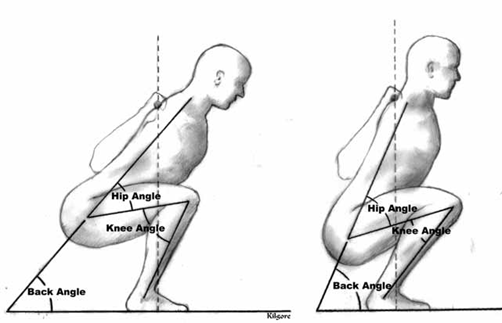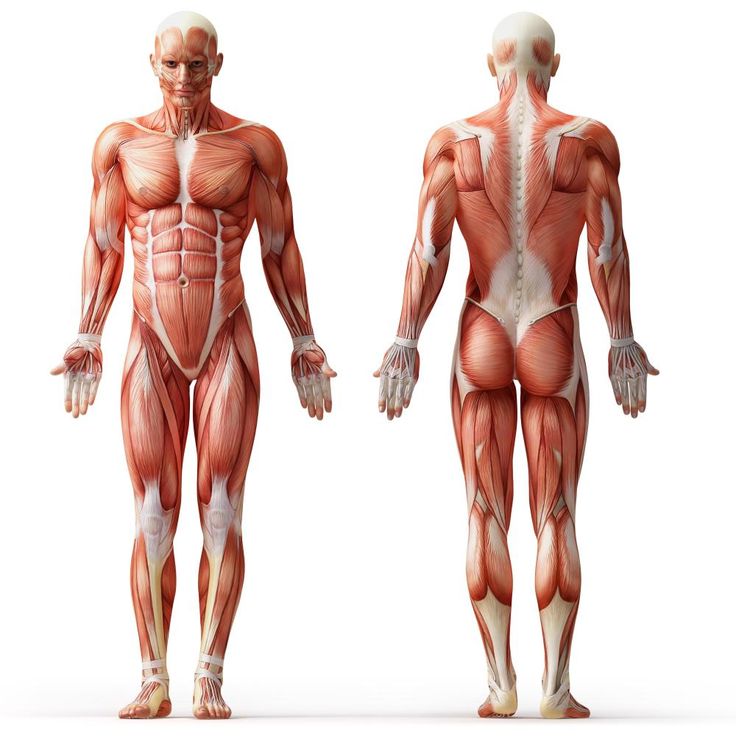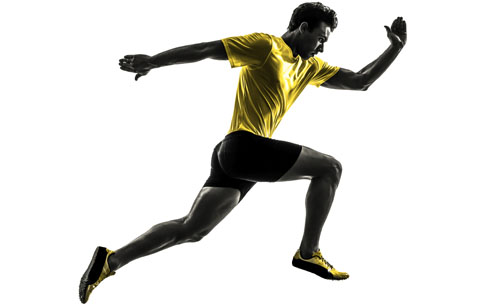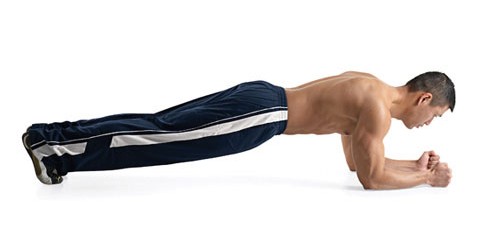Everyone knows exercise plays an important role in our general health, but whether its a lack of motivation, the need to travel to the gym, the cost of equipment, or simply know-how, these supposed obstacles often stand in our way. In reality, all you need is yourself. Here’s how you can get a full-body workout with nothing but your body.
Some of the exercises we’ll be discussing in this post will require some simple equipment, for example, you might need to use a table in your home or place your feet underneath the couch. While most of the exercises won’t require any external objects, the ones that do, will be things you’ll have access to virtually anywhere. Technically this means you’ll need more than just your body, but seeing as everything requires gravity and a ground to walk on, utilising the occasional piece of furniture is a fair caveat.
The four core rules before we jump into the four different types of exercises and their explanations:
- Cardio.
- Upper body.
- Core.
- Lower body.
Here are a few very important rules to remember:
- Always remember to breathe. This seems obvious, but when you’re in the middle of an exercise you may actually forget. In most cases you’ll exhale when you do the hard work (e.g. the pushing up part of a push up) and inhale on the easier part (e.g. when you lower your body for the push up).
- Form is extremely important. If you do an exercise wrong, what seems like progress initially will quickly dissipate and possibly result in injury. Be sure you’re doing the exercises correctly before you begin. Ask a friend to watch your form first. If you know a professional, ask them to help guide you. While this guide will explain proper form, it is your responsibility to ensure you doing the exercises properly and not cutting any corners.
- Take it slowly. While aerobic exercise if often the exception, most other exercise is best performed slowly. Going slowly will work the muscle more and make you stronger.
- The key to a good work out is failure. That doesn’t mean giving up because you’re frustrated and tired, but rather pushing the limits of your strength until your strength is spent. You don’t want to push yourself to the point of injury. Don’t worry too much about the number of repetitions of any given exercise, concentrate on working as hard as you can. The key is to do the best you can with all of the energy you have. If you fail, you succeed.
Related article: The Secret To A Flatter Belly Is All In This Easy Bodyweight Workout
Now that you’re ready to get started, we recommend utilising all the information below:
Aerobic/cardiovascular exercise, or cardio for short, targets your heart. In addition to improving your heart health, it also provides benefits to many other areas in your body as you’ll need to work multiple muscle groups in order to perform aerobic exercise.
The good news is that cardio is great for your entire body. As there are a couple of variations for running it can make it easier and more fun for you. Here are two options that can make running easier and more fun, plus they only take about 20-30 minutes 2-3 times per week.
Interval Training:
Running exhausts your entire body and you have to keep doing it for quite some time. This is because most train for endurance, but that’s not necessary. Interval training is an excellent alternative that essentially involves working much harder for a shorter period of time.
There are several methods of running in intervals, but here’s one example to give you an idea:
- A light jog for a few minutes to get moving (2-5 minutes).
- 1 minute of high-speed running, then 1 minute of low-speed jogging, repeated 5-10 times (depending on your stamina).
- A 5 minute light jog to cool down (or more if necessary).
While you’re technically running about as fast as you can for that one minute, you only have to maintain that intensity for a very short period of time. You immediately get a break afterwards. Instead of enduring 30-60 minutes of sustained running, you only have to endure short bursts. For some, this is preferable.
Each burst can vary in timing as well. For example, some structure their intervals like a pyramid, so you start small, peak in the middle of the intervals and then slow back down towards the end.
Related article: Extremely Effective Bodyweight Exercises for Fat Loss
1. Stair Climbing
Stair climbing is a simple exercise you can perform anywhere there is a staircase, whether that staircase is in your home or in public. It’s especially effective if you skip every other step. How can you do this as a practical exercise? If you have access to a standard staircase at home, just follow these steps:
- Run up and down the staircase as many times as you can.
- Skip steps in-between if you can.
- Stop when you are so tired you cannot continue anymore.
- When you get to this point, you mostly likely will only be part of the way up the staircase.
- If you made it to the top, chances are you’ve got another climb left in you.
- Take the total number of times you made it to the the top of the stairs and cut it in half. For example, let’s say you maxed out at 20 times and that halved number is 10.
- The next time you climb stairs, run up and down 10 times each (the halved number).
- Take a 60-90 second break, then do another set of 10 (the halved number).
- Take another 60-90 second break, then do at least 10 (the halved number). If you can do more, do more. Your goal is to push yourself until you’re too tired to go on.
- As this gets easier, increase the number of times you climb the stairs per set so you’re always pushing yourself to work harder.
Not everyone has a staircase, however, so this exercise isn’t always an option at home. If you don’t want to go out and use a public staircase with regularity, just add stair climbing to part of your everyday life. When you have the option to take the stairs, take them and run up them skipping every other step. This is a good way to work in a little exercise to your regular day.
Note: Stair climbing is also great for strengthening the muscles in your legs, so if they are part of your routine you may choose to skip stair steps in the lower body section.
Related article: 9 Benefits of Running That Make You Healthier Fitter And Insanely Sexy
Upper Body:
When we’re talking about upper body exercise, we’re primarily talking about working the muscles in your shoulders, arms and chest. These exercises are some of the easiest to do and the most rewarding because you tend to see results quickly. That said, upper body exercises are some of the easiest to perform incorrectly and that can:
- Cause you to hurt yourself.
- Fool yourself into believing you’re making progress when you’re essentially doing nothing at all.
While this is the case with any exercise, it’s very important that you take the time to learn the proper form.
With every upper body exercise you also need to figure out how many times to do each. Here is a method to figure that out, using push ups as an example (but you can use this same method for any of the exercises in the upper body section):
- Do as many push ups as you can without taking a break. Don’t stop because you’re tired—stop because you cannot physically do another push up.
- Take the total number of push ups you were able to do and cut that down to half. For example, if you did 30 push ups total that would result in the number 15.
- Next time you do your push ups, do three sets of that number (15 in our example) with 60-90 seconds breaks in between. If you can manage to do more on the last set, you should.
- As you get stronger you’ll need to increase the number of push ups you do in each set.
- If you ever notice things are getting too easy for you, just add 2-5 push ups to each set to make things more challenging.
Related article: 4 Push Ups To A Powerful Looking Physique
1. Push Ups
Push ups are a wonderfully effective exercise that work several muscles including:
- Pectorals.
- Deltoids.
- Triceps.
Essentially meaning the muscles in your chest, on the rounded part of your shoulder and on the backside of your upper arms. While it may seem like a simple exercise to do, good form is vital.
- Lie prone on the ground with hands placed as wide or slightly wider than shoulder width.
- Keeping the body straight, lower body to the ground by bending arms at the elbows.
- Raise body up off the ground by extending the arms. Repeat. Body weight should be lifted by the arms; don’t be tempted to use your butt, stomach or the lower half of your body to pull yourself up.
- To maintain correct body alignment, imagine a straight line running from your head down to your ankles.
2. Dips
Dips are a great upper body-strengthening exercise you can do with the aid of a chair or a bench. While they’ll strengthen many of the same muscles as push ups, they’ll do a bit more to work the rhomboid muscles in your back.
- Stand with your back to a chair or bench. Be sure that the object is sturdy and can comfortably support your body weight.
- Bend your legs and place your palms on the front edge of the bench, with your fingers pointing forward.
- Slowly walk your feet out in front of you, until the majority of your body weight is resting on your arms.
- Inhale and keeping your elbows tucked in at your sides, slowly bend your arms and lower your body until your upper arms are parallel with the floor.
- You should also notice your hips have dropped straight down toward the floor.
- Hold for a second, then exhale and straighten your arms back up to the starting position.
Related article: Upper-Body Push Workout For Better Delts, Pecs And Triceps With This One Routine
3. Curls
Working your biceps, the double-headed muscle on the inside of your upper arm, is the part of the arm most people like to build up and show off. It’s also pretty much impossible to build up without lifting some kind of weight and so, in this particular case, your body isn’t sufficient to get the job done on its own.
If building your biceps is important to you, the best thing you can do is use something you have around the house, anything with a handle and even weight can make a decent substitute. One option is a backpack, so long as you distribute the weight evenly and can keep it from shifting within the bag. Another option is a gallon of milk or juice, or some other kind of container with a handle that can be filled with liquid.
Once you’ve got your weight you can start doing your curls. If you have two even weights, you can perform curls with both arms at the same time. If not, one arm at a time is okay.
- To start, extend your arm down by your side and hold the weight, palms facing forward.
- Make sure your elbows are tucked and your shoulders are straight.
- When you’re in position, slowly bring the weight up to your shoulders—not outside of your shoulders and not too far into your chest.
- Doing this correctly will feel like you’re squeezing your biceps.
- While some exercises do not require a full range of motion, when you’re doing curls it is vital that you go all the way up and all the way back down each time.
- Completely the full range of motion and complete it slowly. If you rush you can hurt yourself.
Three sets of 12 repetitions is a good place to start when you begin with curls, while attempting to do more on your final set if possible. If you cannot handle this many, the weight you are using is too heavy and you should start with something lighter. Don’t feel discouraged if you’re starting with light weights or are unable to complete all three sets the first time. You’ll find that in the beginning you’ll be able to increase the amount of weight you’re using about every 2-3 weeks. Eventually that will slow down, but it’s very encouraging in the beginning.
Related article: The Best Bulging Bigger Biceps Workout To Grow Your Arms

Core / Midsection:
To exercise your core you’ll be doing sit ups, but not just any sit ups! While the standard crunch isn’t necessarily a bad exercise, multiple variations on the sit up can be much more effective at working your entire core. Fortunately there are plenty of sit up-like exercises you can borrow from Pilates that require nothing more than your body (and preferably an exercise mat or towel for comfort). Let’s take a look at a couple of those and some others that are helpful as well.
1. The Roll Up:
The roll up is very similar to a normal sit up with a few key differences.
- First, you start with you arms all the way back behind you and you bring them all the way forward into a sitting position.
- Breathing is key during the process as you inhale as you begin to move upward and exhale as you complete.
- You also perform this motion slowly, as rushing through the process will do far less to work your core.
- Learning to do the roll up properly can take a little practice, and you may not be able to do it fully at first if you’re just getting started.
2. The (Half) Roll Down:
The roll down will feel a lot like a reverse sit up, and therefore may seem redundant, but it’s an important exercise to pair with the roll up.
- Start sitting up with your feet flat on the floor creating a 45 degree angle.
- Just to get in the right position, place your hands under your thighs and hold yourself sitting up.
- You can leave your hands there as you do this exercise, however for a greater challenge you want to place your hands extended out in front of you.
- From this starting position, inhale, then exhale as you lean back slowly towards the ground.
- You’ll be extending down until your shoulder blades are just lightly touching the surface below you.
- It’s important that you do not go down so far that you’re being supported by the ground but just far enough that you know you’ve completed the first full range of motion.
- Now inhale, then exhale as you move back up into the starting position.
- Once you’re there, your back will be slightly curved. Lift your head up and adjust your back into a straight spine position.
- Feel free to do multiple sets of this exercise, but never more than 15 repetitions per set.
Related article: The Bulgarian Bag Workout That Builds Functional Fitness And Impressive Full Body Muscle Growth
3. The Hundred:
To perform this exercise, you lay flat on your back and lift up your knees until they create an approximately 45 degree angle with your feet still touching the ground.
- Start by keeping your arms down with your palms flat against the ground.
- Don’t press your back flat on the floor or arch it up—try to keep it as centred as possible.
- Once you’re in the correct position, lower your chin slightly and begin to lift yourself upwards by pulling your abdomen in.
- As you do, lift your hands off the ground and keep your arms extended straight.
- Some versions of the hundred suggest that you lift your feet off the ground so the bend in your legs create a 90 degree angle. If this is too hard for you, other versions suggest you can perform this exercise without lifting your feet. All that work you just did was to get you in the proper position. Now you get to do the hard part.
- While keeping your arms flat and extended, move them up and down rapidly.
- Each up and down motion counts as one repetition. Every five repetitions you’ll alternate between inhaling and exhaling.
For example, you’ll inhale on the first repetition, the 10th, the 20th, etc. You’ll also exhale on the fifth, 15th, 25th, and so on. When you reach 100, you’re done. If you become tired while performing this exercise, take a short rest at the 50th repetition and start right back up again. As you may have noted from the complexity of this description, there’s a bit of a learning curve and practice involved with the hundred.
4. The Basic Plank:
The basic plank is a simple but challenging exercise that targets the whole of your core. It might take a little practice to get right at first, but once you get it down you just have to hold yourself in the proper position.
- Lie on your stomach, elbows close to your sides and directly under your shoulders, palms down.
- Engage the abs and slowly lift your torso off the floor, maintaining a stiff torso and legs.
- Avoid sagging at the low back or hiking up your hips.
- Continue to breathe while holding this position for 15 seconds or more.
- Your starting goal should be to perform 3 sets of 6-12 repetitions of this exercise, but you’ll want to increase the number of repetitions as you’re able to do so.
Related article: Rock Solid Abs & Core With These 11 Plank Variations
Lower Body:
With cardio, core and upper body exercise underway it can sometimes seem a little excessive to work your lower body. In many ways, you will be working muscles that other exercises have already targeted. That said, you’ll be neglecting multiple areas if you don’t bother with your lower body specifically. Here are a couple of exercises you’ll want to do to make sure you’re not leaving anything out.
1. Squats:
Squats are a great, simple exercise to strengthen all sorts of good stuff including your legs, lower back, hips, buttocks and even bones. So long as they’re performed correctly, they’re an excellent way to target the majority of the muscles in your lower body. So how do you squat correctly?
- Stand up straight with your feet firmly planted on the ground approximately shoulder width apart.
- To help maintain a straight back as you perform the exercise, it’s a good idea to focus on an object directly ahead of you at eye level.
- Contract your abdominal muscles as you bend your legs at the knees.
- Either stretch your arms out ahead of you, lightly position your hands behind your ears or hold your arms at your side as you slowly lower yourself into a squatting position.
- Lower your body to a position where your thighs are almost parallel to the floor.
- Return to the starting position and repeat.
Much like push ups, a squat is a comprehensive exercise that you can do pretty much anywhere. This makes it easy to fit in a set whenever you have some spare time.Simply try three sets of 20 squats to start, performing additional squats during the last set if you can manage. Continue to work your way up whenever the exercise gets to be easy. Remember, you won’t build additional strength if you don’t continue to push yourself as you improve.
Related article: Firm Your Butt And Legs As You Torch Calories With This Dynamic Routine

2. Stair Steps / Step Ups:
Much like climbing stairs, you can build a lot of lower body strength by performing single stair steps. The key here, however, is not to step up a lower stair like you’d find on a staircase but a higher one that’s a little lower than the height of your knee. If you try to step up and your knee comes up higher than your hip, the step is too high and you’ll need to find something lower.
If you were in a gym you could use a standard bench press bench, but at home a wide stool, flat ottoman, or other furniture of similar height should do just fine. A park bench works well, too. Just be sure it supports your weight before you start stepping. If it breaks underneath you, you’re obviously going to hurt yourself.
- To perform the stair step exercise, you’ll want to do one leg at a time.
- Starting with the left, place your left foot on the bench or stool.
- Using the strength from that left leg, push yourself upward to bring your right foot onto the stool as well.
- Do not use the strength from your right leg to help you. You will need it later when you switch and your right foot is on the stool.
- Perform this action 10-12 times. When you’ve finished with one leg, switch to the other and perform 10-12 repetitions as well.
- This constitutes one set.
- Take a 60-90 second break after each set and perform a total of three.
As these stair steps become easier, you do not necessarily want to increase you repetitions as you might with other exercises. Instead, you may consider adding weight to your legs or your arms. Adding weight to your legs generally means purchasing a specific kind that you can attach for the purpose.








